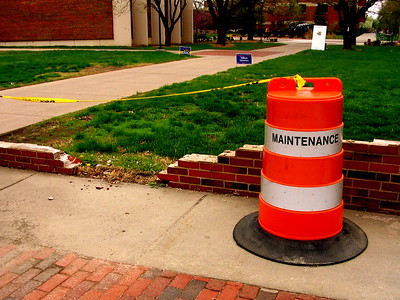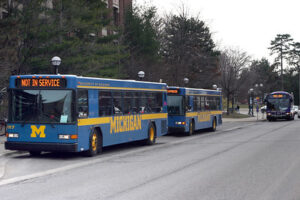Late last year, the Kansas state legislature earmarked $45M to help address maintenance neglect on the campuses of the state universities in Kansas. There’s nothing wrong with fixing facilities, but $45M is less than 4% of what the universities need to rehabilitate their buildings. The current facilities backlog on university campuses in Kansas now stands at $1.2B and touches about 500 buildings.
This isn’t the first time the state legislature has devoted money to curing maintenance neglect at the state’s higher eds. In fact, the legislature devotes about $40M annually to the effort. To put the amount in perspective, that’s about $80,000 per building. But the estimated facilities backlog averages $2.4M per building. So the $80,000 bump ends up being less than 3.5% of the expenditure level needed to eliminate neglected maintenance.
Eliminating three or four percent of the maintenance backlog per year per building amounts to a token gesture. And it will never allow the universities to get ahead of their maintenance neglect problem. Offering this level of funding for neglected maintenance is like making the minimum payment on a credit card. It won’t reduce your balance.
The way to address the facilities backlog is to avoid creating one in the first place. Reducing your credit card balance involves making payments and refraining from using the card. Similarly, it’s not possible to reduce a maintenance backlog by simply ticking items off the building’s To-Do list. At the same time you’re eliminating neglect, you also have to prevent more from accumulating. That means fully funding the maintenance budget and providing additional funds to cover the neglected work.
Strategies for eliminating maintenance neglect
The strategy may include minimum maintenance funding standards on a per-building basis. Although I have written about industry average maintenance spending in terms of dollars-per-square-foot, the reality is that maintenance costs for a building often depend upon the design of a building, when it was built, and the materials and systems the builders used. Two 30,000 square-foot buildings on the same campus could have very different maintenance costs.
Every building on campus needs to have its own maintenance budget. Using a combined budget for all buildings hides accumulating maintenance too easily and promotes neglect for buildings that are deemed less important. These low-priority buildings can accumulate expensive maintenance neglect just as easily as high-visibility buildings can.
The amount of neglected maintenance in each building needs to be logged on the books as a liability because frankly, it is. In addition to being a financial liability, undone maintenance can also represent a legal liability. If someone gets hurt in a building because the building operator habitually failed to perform ordinary maintenance, the liability could be astronomical.
Finally, it is important to prioritize the performance of ordinary maintenance. There is no way avoid creating a costly maintenance backlog when you are unwilling to perform routine maintenance on time. If you cannot afford to perform maintenance when its costs are the absolute lowest they will ever be, how will you find the money to perform it when its costs have risen five to ten times?
Photo Credit: sara , via Flickr


















